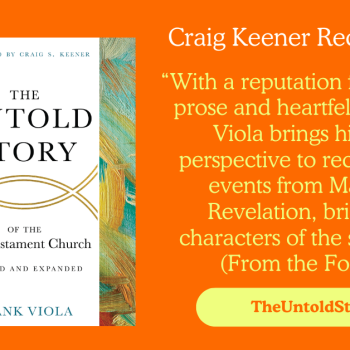Turning my attention to Eboo Patel's volume, Sacred Ground, the author is well known within the interfaith movement as a popular speaker as well as founder and president of Interfaith Youth Core (IFYC). His desire is to see Americans not "simply coexist in a lukewarm tolerance, but rather actively cooperate and mutually thrive" (xiii) with their religious differences. The book is devoted to Patel's ideas about how we might realize this "promise of American pluralism" (xxv).
Patel begins his volume with a consideration of how American attitudes changed in regards to Islam and religious pluralism after 9/11. He discusses the plans for the construction of the Cordoba House, a community center in New York that conservatives and those on the Religious Right would succeed in framing as the "Ground Zero mosque," an alleged symbol of victory by Islam over America that would encroach upon the sacred space where the Twin Towers stood. This narrative has continued to develop, facilitated by those on the Right, from political leaders like Newt Gingrich (whose troubling shift on this issue for political expediency is discussed in the book), to religious leaders including Evangelicals.
Patel discusses past anti-Catholicism as a parallel to present anti-Islam (which can also be seen in anti-Mormonism), but although this presents a disturbing challenge, Patel sees hope. He notes that "when Evangelicals change, America changes" (56), and he mentions the positive work of certain Evangelicals across the spectrum presenting a different way forward, including Bob Roberts of Northwood Church, Gabe Lyons of Q, and Jim Wallis of Sojourners.
Some of the most helpful sections of this book for Evangelicals come in Patel's discussion of "the science of interfaith cooperation," and how this relates to college and university, as well as seminary students, as key demographic groups that need to be involved in positive forms of interfaith engagement. In regard to the first element, in his chapter on the methods to facilitate change in people, Patel rightly recognizes the need for vision to be accompanied by a process and measurements that maximize impact. He draws upon social change theory, describing an "interfaith triangle" of "attitudes, relationships, and knowledge" (77). Survey results and experiential data indicate that the more individuals know about a given religion, and know someone in a religion, the more positive will be their assessment of that religion and of pluralism.
In terms of the second element involving students, Patel knows through his work at IFYC that
Young people don't like to have their own faiths or the faiths of their friends maligned. They don't view people from different faiths in an inevitable clash of civilizations. They desperately want a vocabulary that helps them stay grounded in their own tradition and relate positively to those from other traditions. (121)
These attitudes are also present in the younger Evangelicals. There are opportunities here for a new form of interfaith education and experience that will meet the needs of Evangelical college and university students, while also being faithful to the Evangelical tradition. Patel also recognizes the significance of seminaries and divinity schools in this process, but here he has identified another challenge. In his speaking in these institutions he discovered the perspective of one Christian professor who concludes:
The church simply has not taught our future leaders a way to articulate a Christian identity in a religiously diverse world. We need a language that maintains our own distinctiveness and truth claims while respecting the goodness in others, and above all, affirming the holiness of relationships. The most prevalent Christian language in the public square is the language of domination. (140)
Interestingly, it is here that the diverse religious backgrounds, foci, and approaches of McLaren and Patel converge. McLaren calls for a benevolent rather than hostile faith identity among Christians, while Patel yearns for a way "to articulate religious identity in a world of diversity in a way that affirms particularity and builds pluralism" (141). They have each identified religious identity without compromise as a central issue, and the need for change in understanding and relationships as way forward. But how can this be done?
If we put these two pieces of the puzzle together, a new way forward for Evangelicals emerges. Through the use of the interfaith triangle, which puts Evangelicals in educational programs combined with relationships through joint service projects, attitudes are changed, relationships are formed, and knowledge of other traditions are increased and perhaps reshaped. In this way faith identities are reshaped as well, so that a shift is made from hostility to benevolence. This model has been utilized among students at Gordon College using the Loving Our Religious Neighbors curriculum of Joshua Daneshforooz, and it is an important part of the work of the Evangelical Chapter of the Foundation for Religious Diplomacy.
Brian McLaren and Eboo Patel have written two significant volumes that address one of the key challenges of our post-9/11 world. Those Evangelicals interested in a better understanding other religions as well as their own, in a better way of sharing their faith, and in peacemaking as we love our neighbors as ourselves, are encouraged to add these volumes to their libraries.




